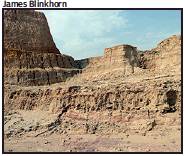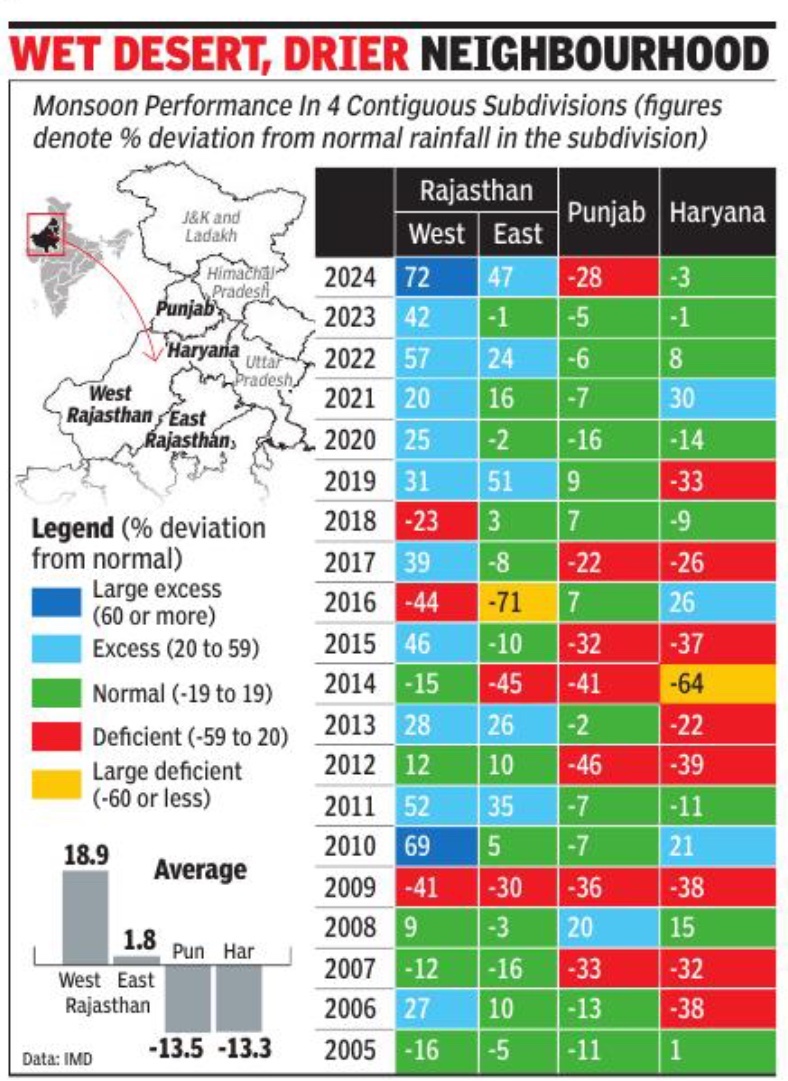Thar desert, India
This is a collection of articles archived for the excellence of their content. |
Contents |
Location
The Thar Desert embraces the districts of Jaisalmer, Barmer, Bikaner and Jodhpur. Actually, Rajasthan desert is a greater part of the Thar Desert that is spread across the western part of India and the southeastern Pakistan.
“Lost” river near Bikaner
Findings, as in 2020
Ruchika Uniyal, October 22, 2020: The Times of India

From: Ruchika Uniyal, October 22, 2020: The Times of India
An international team of researchers has found a “lost” river that ran through the central Thar desert, near Bikaner, 1,72,000 years ago. The river was likely a lifeline for Stone Age populations, helping them thrive in what is now an arid region, while also serving as an important corridor for human migration, according to the research which represents the oldest directly dated phase of river activity in the Thar region.
The new findings — published online in the ‘Quaternary Science Reviews’ journal ahead of its print publication — push back the previous evidence for river activity in Thar by up to 80,000 years.
Researchers from Germany’s Max Planck Institute for the Science of Human History (MPI-SHH), Anna University (Chennai) and Indian Institute of Science, Education and Research (IISER) in Kolkata studied deposits of river sands and gravels exposed by quarrying activity near Nal village, outside Bikaner, in 2014 and 2019.
“The key method we used is luminescence dating that enables us to calculate the age at which grains of quartz in river sands were last exposed to light,” James Blinkhorn at the MPI-SHH told TOI. “The previously oldest, well dated evidence for river activity in the Thar comes from the Luni Valley, which was active 80,000-90,000 years ago, with comparable evidence from further south in the Mahi, Sabarmati and Orsang valleys, where similar evidence for fluvial activity stretches back to 100 thousand years ago,” said Blinkhorn.
According to Hema Achyuthan, professor at Institute for Ocean Management, Anna University: “Thar may be a desert now but there are several paleo channels — where rivers would have once flown — in the region that are buried by sand dunes. In certain places, such as Nal, the gravel deposits are exposed and that helped us directly date one such river system for the first time.”
Rainfall
2005 – 2024
Amit Bhattacharya, Oct 14, 2024: The Times of India

From: Amit Bhattacharya, Oct 14, 2024: The Times of India
New Delhi: West Rajasthan, land of Thar desert and the driest region in India’s plains, was among two subdivisions out of 36 that received excess rainfall during this monsoon.
Surprisingly, this was hardly an unusual monsoon for west Rajasthan, which has been getting higher-than normal rainfall for at least the past two decades in an indication of shifting monsoon patterns in a warming world. As per IMD data analysed by TOI, west Rajasthan has got above-normal or excess monsoons for six years in a row. In last 20 years, June-Sept rainfall there has been excess/above normal in 12 years, normal in five and deficient in three. On average, monsoon has been 19% above normal during 2005-2024.
‘With warming climate, Raj to get more rains’
Just how exceptional this kind of rainfall is in the region can be gauged through a comparison with two contiguous subdivisions, Punjab and Haryana, during this period. Punjab registered just one abovenormal year, 12 normal years and seven years when monsoon was deficient, that is, 20% or more below normal. On average, the JuneSept rainfall was 13.5% below normal in the state during 2005-2024.
Haryana’s monsoon pattern resembles that of Punjab. Since 2005, it has seen three above-normal years, eight years of normal rainfall and as many years of deficient rains. In addition, monsoon was ‘large deficient’ (or scanty) in one year. On average, monsoon has been 13.3% below normal in these 20 years.
Even in India as a whole, monsoon during this period has on average been 1.5% less than normal.
However, it must be noted that, being the driest subdivision (SD) in the country, the ‘normal’ rainfall figure for west Rajasthan is significantly lower than that of the other two SDs — 283.6mm at present as compared with 439.8-mm in Punjab and 430.7mm in Haryana.
Yet, the divergence is significant and in several recent years west Rajasthan has received higher rainfall even in absolute terms than either Punjab or Haryana.
“Rainfall over Rajasthan and Punjab-Haryana is decided by the position of the monsoon trough and the westward movement of lowpressure systems in the rainy season. During recent years, we have seen that the monsoon trough was positioned south of its normal position with more westward movement of lowpressure systems. In such situations, Rajasthan gets more rain and Punjab-Haryana less,” explained M Rajeevan, veteran meteorologist and former secretary of the Union earth sciences ministry.
Rajeevan said the region could be drawing rain-bearing clouds towards itself due to changes in soil moisture, land use patterns and, possibly, the addition of water bod- ies in recent decades, such as the Indira canal.
“Local soil moisture feedback over Rajasthan also helps to tie-up the monsoon trough in that position and attract more low-pressure systems over that region. There is growing evidence of increasing soil moisture in Rajasthan and its interaction with monsoon,” he said.
Finally, more rain over the Thar desert in recent years may just be a sign of things to come in an era of climate change. Said Rajeevan, “Future climate projections suggest Rajasthan and its desert will get more rain in a warming climate.”